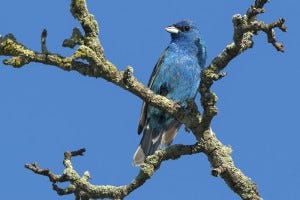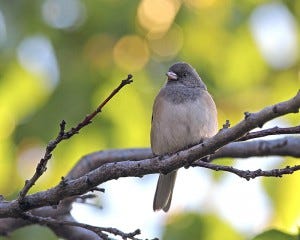
Stretching for more than 5,000 miles from Central and South America and to the polar regions of North America, the Central Flyway shares many of the same attributes of the Mississippi Flyway. Still, it is distinct enough to be included as its own flyway since many of the birds use the eastern edge of the Rocky Mountains and the American prairie as navigational guides, rather than the river.
Bird Migration: Central Flyway
 The states generally covered by the Central flyway include Alaska, Colorado, Kansas, Montana, Nebraska, New Mexico, North Dakota, Oklahoma, South Dakota, Texas, Utah and Wyoming.
The states generally covered by the Central flyway include Alaska, Colorado, Kansas, Montana, Nebraska, New Mexico, North Dakota, Oklahoma, South Dakota, Texas, Utah and Wyoming.
A portion of Canada is also included in the Central flyway. The provinces and territories these birds head toward include Alberta, British Columbia, Northwest Territories, Nunavut, Saskatchewan and Yukon Territory.
The other flyways of North America include the Pacific, the Atlantic and the Mississippi. Flyway maps on other birding sites can be slightly different than the one you see above — showing fewer states for each flyway. We opted to be more inclusive in which areas to include in the Central Flyway.
List of Migratory Birds
Bird Life International says almost 400 bird species use the Central Flyway, and the sheer number of species using it makes it extremely important.
Of course, many bird species will not travel the entire flyway while migrating. Instead, most travel just far enough to find available food. By providing feeders along the route, you help birds maintain their strength during the journey, no matter what its length. Among those species using the Central Flyway, there are plenty of feeder birds, including:
- American Crow
- American Goldfinch
- American Robin
- American Tree Sparrow
- Band-tailed Pigeon
- Baltimore Oriole
- Black-chinned Hummingbird
- Blue Grosbeak
- Bohemian Waxwing
- Brewer’s Blackbird
- Brown-headed Cowbird
- Bullock’s Oriole
- Cassin’s Finch
- Cedar Waxwing
- Chipping Sparrow
- Common Grackle
- Common Redpoll
-
 Dark-eyed Junco
Dark-eyed Junco - Evening Grosbeak
- Field Sparrow
- Fox Sparrow
- Hermit Thrush
- Hoary Redpoll
- Indigo Bunting
- Northern Flicker
- Orchard Oriole
- Pine Siskin
- Pine Grosbeak
- Purple Finch
- Red-breasted Nuthatch
- Red-winged Blackbird
- Rose-breasted Grosbeak
- Song Sparrow
- Western Meadowlark
- White-crowned Sparrow
- Yellow-rumped Warbler
How You Can help
In previous editions of this series, we covered providing food and water, maintaining a clean habitat for your backyard birds and provide shelter for those stopping briefly in your yard.
On a broader level, the best way to assist your bird friends is to help educate. Throughout the year, there are easy-to-join bird count activities where citizen scientists help collect data for ornithologists and biologists.
During these activities, volunteers are asked to keep an accurate record of the birds they see in their backyards, at nearby parks and other locales. This information helps scientists understand changes in population and range among the birds across the country.
Other citizen scientist projects ask volunteers to monitor wild bird nests, assist in banding activities and even help with rebuild and maintain habitats. Many of these require a certain degree of training before you can participate, so try contacting local organizations to see what you can do.
In regard to injured baby or abandoned baby birds, it’s important to rely on the networks set up to help these birds. Rather than try to raise an orphaned chick or injured bird, contact a local wild life rehabilitator.
So, in other words, to help the birds you love, reach out to the organizations that are specially trained in wildlife rehabilitation!
Recommended Feeders
Considering the variety of terrain this flyway covers, you need to include some rugged feeders in your backyard. This territory can be hit by sudden snow squalls at a moments notice. Likewise, these same feeders need to be resistant to any non-birds eager to dig through them.
-
Keep your birds seed safe — Looking to keep your bird seed from being eaten by critters other than birds? Check out a steel-mesh feeder or one that limits how much seed is available at one time.
- Keep your bird seed dry — During rainy weather, you want to keep your birds’ food supply as dry as possible. To do so, pick feeders with large shields as their top lids. These baffles mainly serve to keep squirrels away, but they also keep the worst weather from ruining your seed.
- Hummingbirds –– These little birds love the mountains as much as they love your yard, so don’t hesitate to put up feeders. Look for feeders that offer some color or make it easy to fill.
- Additional needs — Since this flyway can be subjected to some extremes in weather, it’s also a great idea to provide some benefit to birds beyond food. This wren house is constructed from cedar and stays cool during warm summer days. On those hot, dry days on the prairie, a waterer will get plenty of attention from a wide variety of birds.







